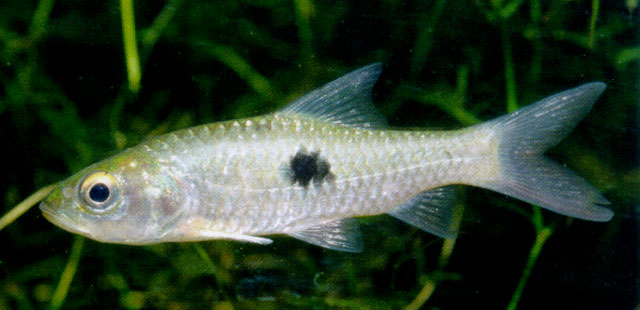| Cyprinidae (Minnows or carps), subfamily: Smiliogastrinae |
| 35 cm SL (male/unsexed) |
|
benthopelagic; freshwater, potamodromous |
| Asia: endemic to the Mekong basin. |
|
Has a round midlateral blotch under the dorsal-fin origin in adults and a plain grey caudal fin (Ref. 27732); juveniles lack black teardrop-shaped marking on cheek; barbel always shorter than eye width (Ref. 12693). |
| Occurs in slowly moving or standing water habitats (Ref. 12693). Encountered also in rapid-running mountain streams of the middle Mekong (Ref. 12975). Common in impoundments, with small individuals frequenting areas of dense vegetation. Feeds mainly on prawns, crabs, and shrimps, along with some insect larvae and some fish as well. Breeds at the start of the rainy season and the young are found in seasonally flooded habitats in June. Marketed fresh (Ref. 12693). |
|
Least Concern (LC); Date assessed: 19 February 2011 Ref. (130435)
|
| harmless |
|
Occurs in the Mekong basin. Found in the lower and middle Xe Bangfai (Ref. 27732) and Ban Hang Khone at Don Khone, 3 km below the fall line of the great waterfalls of the Mekong basin at Lee Pee (Ref. 9497). Collected from Luang Prabang, Tah Ngon, Vientiane, Tha Bo, Sithan Tay, Hatsalao, Bang Lieng (Ref. 4792). Museum: Mekong at Ban Hang Khone, CAS 94927 (Ref. 5515). Also Ref. 30857, 36654, 37767. |
Source and more info: www.fishbase.org. For personal, classroom, and other internal use only. Not for publication.

